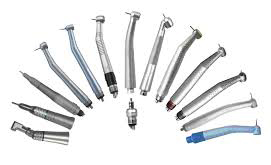Dental Handpiece Sterilization Guidelines
In today’s dental practice, the need for infection control has never been more important. In 2008, the Centers for Disease Control and Prevention (CDC) indicated that dental handpieces can be contaminated internally with patient material and that proper steps in regards to sterilization must be performed after each patient. To help your practice with its dental handpiece sterilization process, we have put together the following guidelines:
- Transport the Instruments: The used or contaminated instruments should be transported to the sterilization area with minimal exposure to other staff members and/or patients. Once the contaminated instruments are finished being used in the operatory, they should be placed in a sealed container. The clinician who is transporting should be wearing appropriate personal protective equipment.
- Wipe External Surfaces and Remove Burs: You should always wipe the external surface of the handpiece to remove any debris. The bur should also be removed from each handpiece and should be properly cleaned and sterilized per the bur manufacturer’s requirements. Handpieces should never be sterilized with the bur in the chuck.
Rinse and Dry the Instruments: Rinse the handpiece in clean water and allow the handpiece to be completely dry before packaging in the sterilization pouches. Each handpiece manufacture has specific protocols for cleaning their handpieces, so it is best to follow their recommended guidelines. - Pouch or Wrap the Instruments: All instruments to be sterilized should be packaged in pouches or wraps during the sterilization process. There are a variety of package options to choose from depending on the practices needs.
Sterilize the Instruments: There are a wide variety of different sterilization methods available today. The most popular is “Autoclaving” or moist heat under pressure. To obtain optimal proficiency within the autoclave unit, temperatures need to reach 275 degrees and tested weekly. A properly working autoclaving unit will ensure all of your instruments are free of infectious and contaminated material. The autoclave unit should always run through the complete cycle. Refer to the manufactures manual for proper autoclaving procedures. - Cool the Instruments Off Before Use: Never use a handpiece that hasn’t completely cooled off. Running a handpiece under cool water can warp the turbine, and using the handpiece while still warm will cause stress to the turbine. Always allow the handpiece to completely cool down to room temperature before using.
We hope this helped you understand more about dental handpiece sterilization!
Looking for a Dental Handpiece Repair Technician?
We’d love to partner with you to help repair and extend the life of your dental handpieces. New customers save $50 on the first dental handpiece repair order! Just check “New Customer” on our contact form.

1.800.569.6627